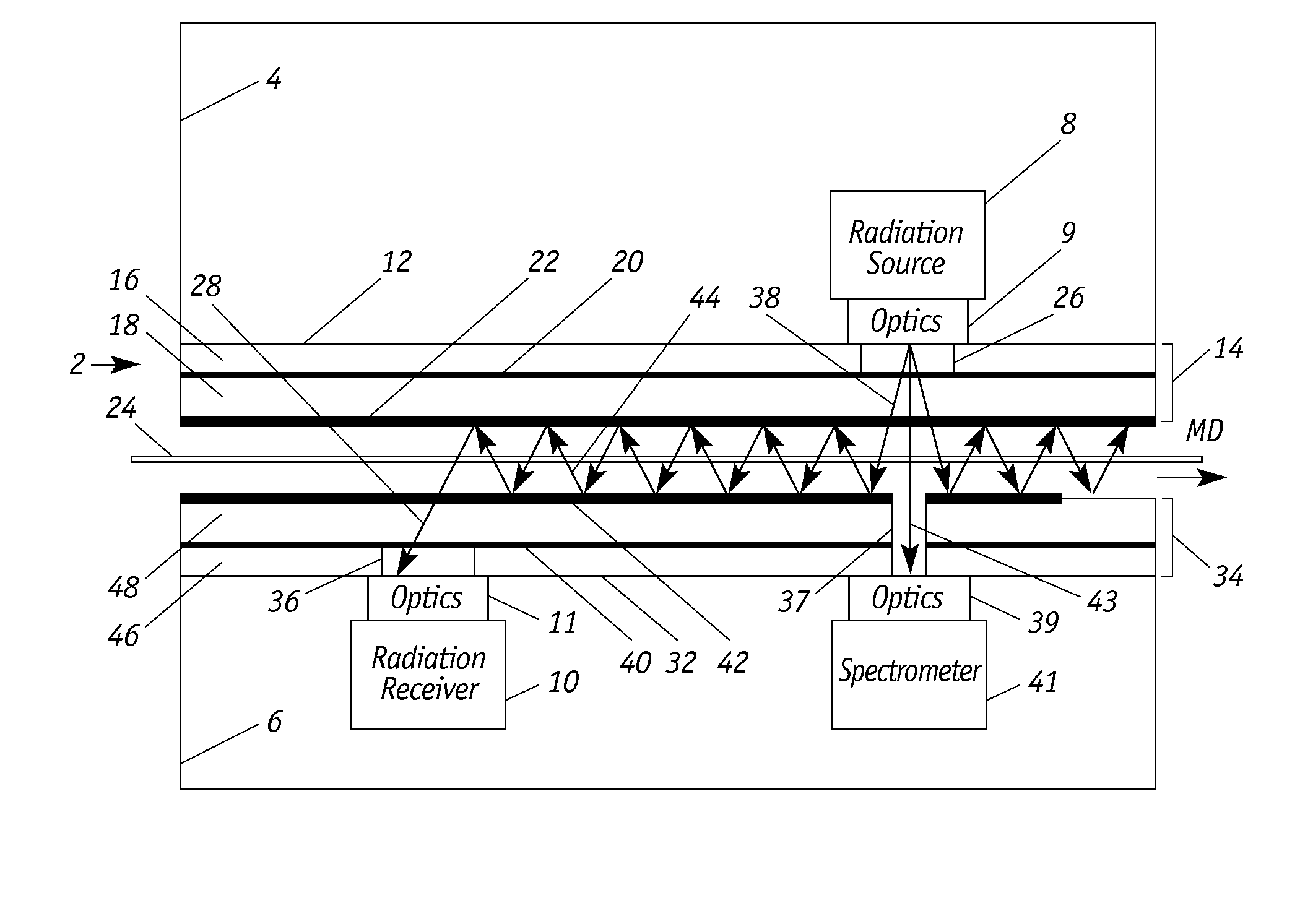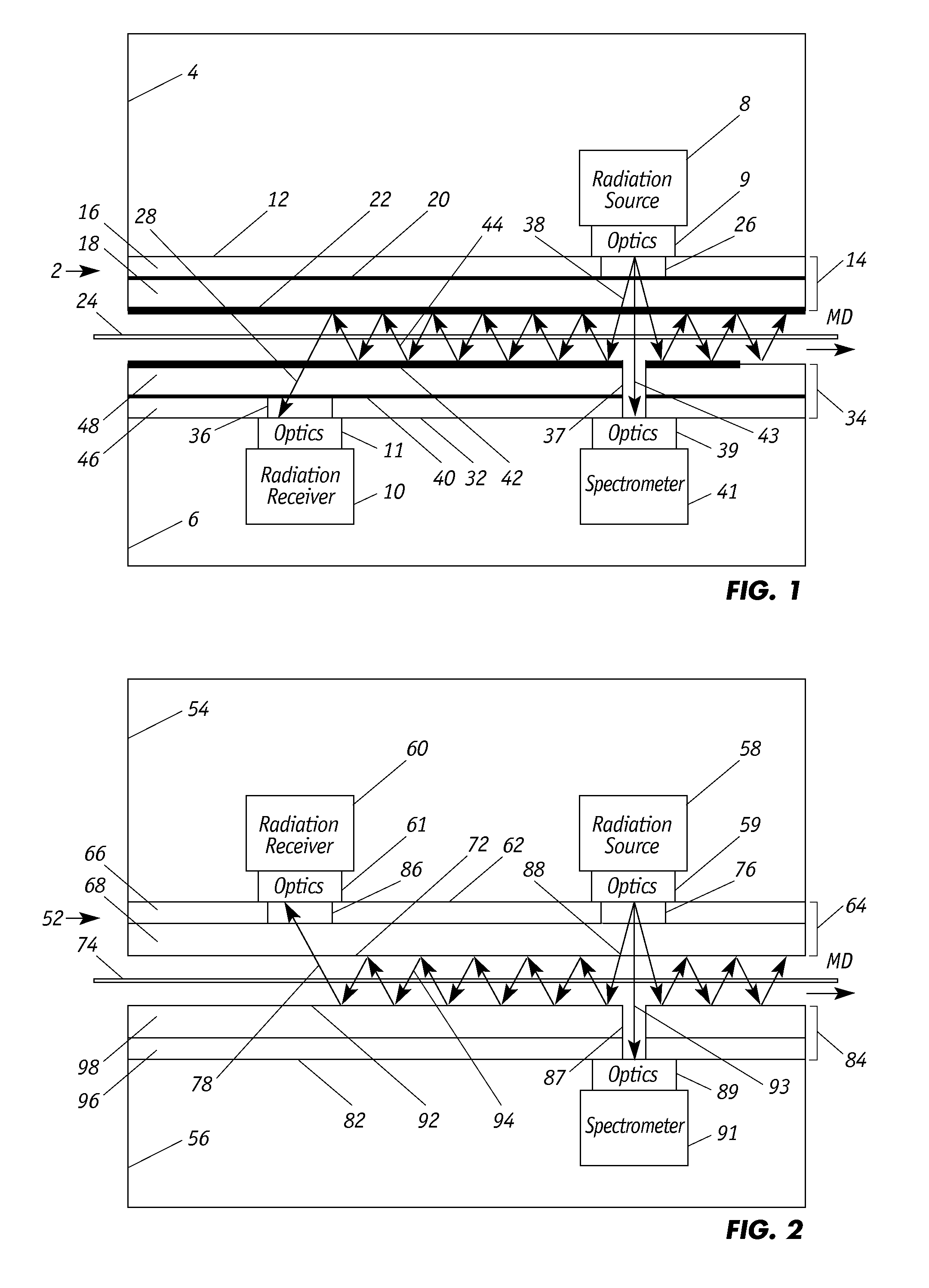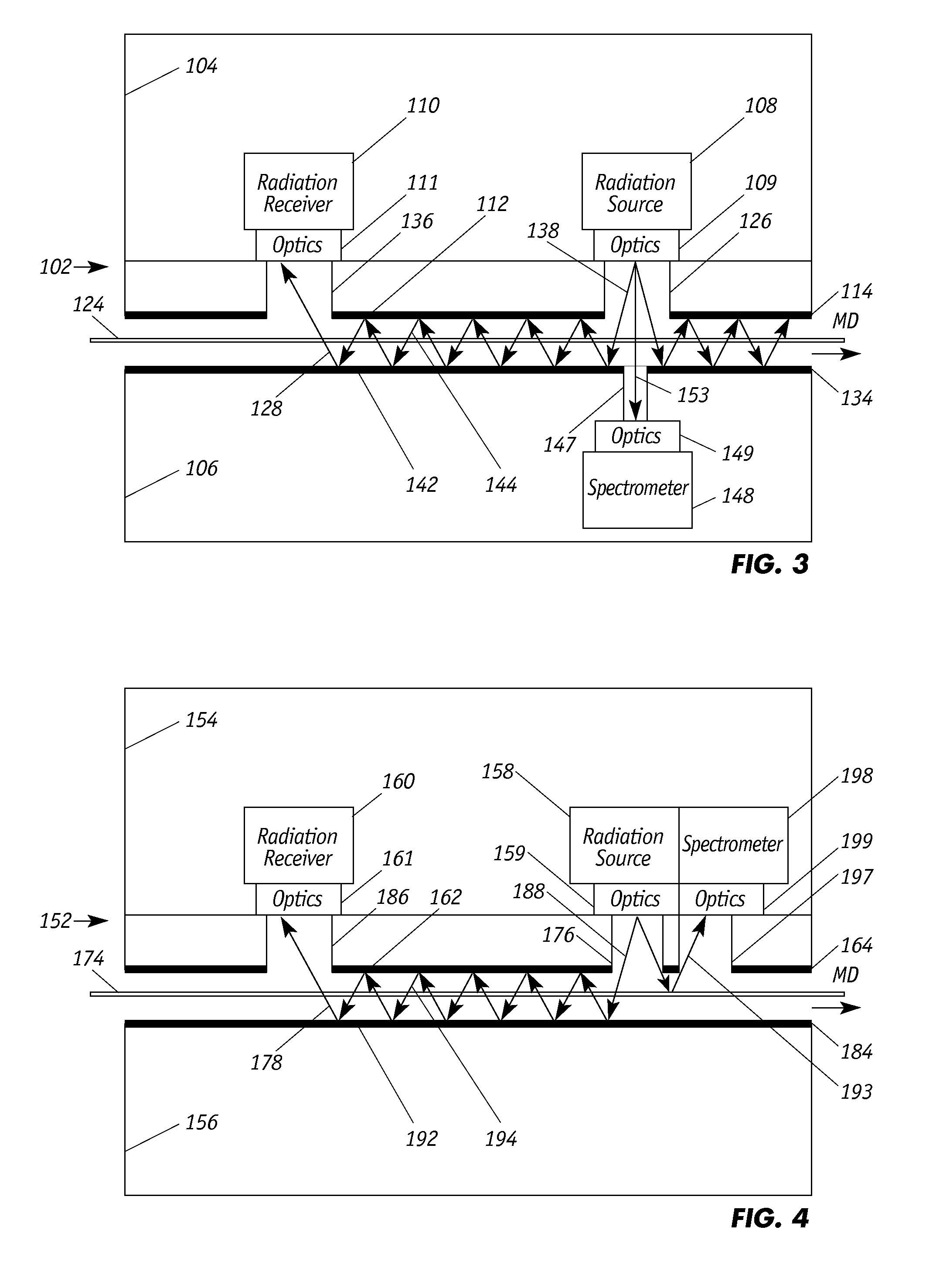Spectroscopic Sensor for Thickness or Weight Measurement of Thin Plastic Films
a technology of thin film and spectroscopic sensor, which is applied in the direction of interferometric spectrometry, instruments, weighing apparatus using radiation, etc., can solve the problems of not providing adequate spectral range, compact spectrometer providing high spectral range and resolution, and reducing the sensitivity of the radiation receiver to selected components within the layer. , to achieve the effect of enhancing the sensitivity of the radiation receiver
- Summary
- Abstract
- Description
- Claims
- Application Information
AI Technical Summary
Benefits of technology
Problems solved by technology
Method used
Image
Examples
Embodiment Construction
[0022]FIG. 1 illustrates a non-contacting optical sensor 2 that includes enclosures 4 and 6 (each also called “scanner head” or “head”) that house sensor components for measuring qualities, characteristics or features of a moving web 24 that can be monitored which include, but are not limited, to single and multi-layered compositions, coatings, films, webs or sheets. While the sensor will be illustrated in measuring characteristics in paper and plastic, it is understood that the sensor can be employed to detect a variety of components in a number of different materials including, for example, coated materials, fabrics, and the like. Sensor 2 is particularly suited for measuring the thickness or weight of a layer of light transmissive material 24 moving in the machine direction (MD). Scanner 2 includes a radiation or light source 8 that is positioned in head 4 and spectrometer 41 and a radiation receiver or detector 10 that are both positioned in head 6. An upper diffuse reflector pl...
PUM
| Property | Measurement | Unit |
|---|---|---|
| thicknesses | aaaaa | aaaaa |
| angles | aaaaa | aaaaa |
| thickness | aaaaa | aaaaa |
Abstract
Description
Claims
Application Information
 Login to View More
Login to View More - R&D
- Intellectual Property
- Life Sciences
- Materials
- Tech Scout
- Unparalleled Data Quality
- Higher Quality Content
- 60% Fewer Hallucinations
Browse by: Latest US Patents, China's latest patents, Technical Efficacy Thesaurus, Application Domain, Technology Topic, Popular Technical Reports.
© 2025 PatSnap. All rights reserved.Legal|Privacy policy|Modern Slavery Act Transparency Statement|Sitemap|About US| Contact US: help@patsnap.com



